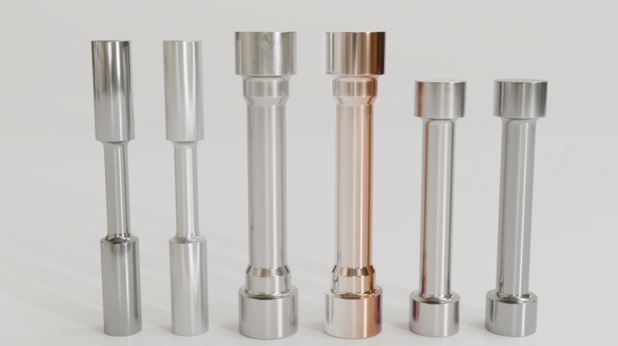From Manual to Automated: Transforming Surface Preparation with CNC Polishing
Surface preparation is a foundational step in manufacturing, directly influencing final product quality across a range of industries. Traditionally, surface polishing and finishing were performed manually, relying on trained operators’ skills and precision. However, as production demands have increased, manual polishing has shown considerable limitations in meeting uniformity, efficiency, and scalability. Here comes CNC polishing, or Computer Numerical Control polishing—a transformative technology that automates surface preparation. This article examines the progression from manual to CNC-driven polishing, the impact of this shift on production, and the lasting influence of automation on industries that rely on high-quality surface finishes.
The Limitations of Manual Surface Preparation
Manual polishing, once the primary method for a polished surface, has become increasingly challenging to justify in today’s fast-paced production environment. Even the most skilled operators face issues with consistency and variability, as no two human-polished parts are exactly alike. This variance is a critical drawback in industries where precision and uniformity are essential. Further, manual polishing is time-intensive, with operators often dedicating hours to perfecting a single component. This laborious nature hinders scalability, which makes it difficult for manufacturers to keep up with large orders or expand production without increasing costs significantly.
Manual polishing also takes a toll on operators, as repetitive motions over prolonged periods lead to fatigue, which negatively impacts quality. Despite the expertise required, manual polishing is prone to minor errors, especially when the task involves intricate details or extended polishing hours. Additionally, adapting manual polishing to new materials, unique geometries, or specialized finishes often requires additional training and customized tools, adding further complexity and costs. As a result, industries increasingly see CNC polishing as a more feasible solution that overcomes these inherent limitations.
How CNC Polishing Revolutionizes Surface Preparation
CNC polishing fundamentally changes surface preparation by replacing manual labor with automation, precision, and speed. CNC polishers operate using pre-programmed instructions that allow for detailed and consistent polishing across all parts, whether simple or complex. This precision is invaluable in industries like aerospace, where even the slightest deviation can affect component functionality and safety. CNC polishing guarantees consistency and greatly reduces production times. Machines such as the longitudinal polisher are particularly effective at providing comprehensive and even finishes on extended surfaces, optimizing the polishing process for efficiency and quality.
Automation in CNC polishing eliminates human variability, offering uniform results every time. Beyond consistency, CNC polishers allow operators to fine-tune settings such as speed, pressure, and depth to suit specific materials or desired finishes. This adaptability gives manufacturers the flexibility to handle different materials, including metals, composites, and polymers, with high precision. The result is a level of flexibility that manual polishing cannot achieve without significant retraining and added operational time.
CNC polishing also minimizes labor dependency, which is critical for manufacturers facing labor shortages or looking to reduce costs. With CNC systems, one operator can oversee multiple machines, enabling higher production rates without increasing manpower. This reduced reliance on manual labor not only cuts costs but also improves scalability, as production levels can be adjusted to meet market demands more fluidly. Furthermore, CNC polishers allow the creation of intricate designs and micron-level accuracy, a crucial requirement for high-performance parts. Industries adopting CNC polishing enjoy a simplified, reliable process that improves productivity and quality control.
Key Industries Benefiting from CNC Polishing
CNC polishing benefits resonate in a number of sectors where surface quality affects product performance, aesthetics, and safety. Aerospace manufacturing, for instance, requires components with highly polished, aerodynamic surfaces to minimize drag and enhance structural integrity. CNC polishing provides the precise, uniform finish essential for these components, meeting the strict safety and performance standards that define the industry. With CNC technology, even complex parts like turbine blades or aerodynamic panels can be polished efficiently, a task that would be prohibitively laborious if done manually.
CNC polishing is vital for creating smooth, hygienic instruments and implants. Surgical tools and medical devices require consistency in polish quality to guarantee that they meet strict health and safety regulations. CNC polishers deliver this consistency across batches, allowing for high standards in medical applications. CNC technology polished finishes meet these standards but also contribute to the durability and reliability of medical instruments, supporting patient safety and care.
Automotive manufacturing has similarly benefited from CNC polishing, where both aesthetic and functional finishes are highly valued. Engine parts, brake components, and body panels all benefit from precise polishing that reduces friction, optimizes performance, and improves visual appeal. CNC polishing’s ability to achieve uniform, high-quality finishes ensures that automotive components meet industry specifications while enhancing production efficiency. With adjustable settings, CNC polishers can easily accommodate the range of materials and finishes needed across the automotive industry, from polished metal to textured surfaces.
The flexibility of CNC polishing also extends to the general manufacturing sector, for which parts and components of all shapes and sizes require polished finishes. This adaptability is invaluable in fields like electronics, consumer goods, and optics, where CNC technology allows manufacturers to tailor finishes to client specifications without sacrificing efficiency. As a result, CNC polishing has become an integral tool for manufacturers seeking customized, high-quality finishes on a broad array of products.
The Future of Surface Preparation
CNC polishing marks a new chapter in surface preparation, transforming a labor-intensive process into a highly automated and efficient operation. By addressing the limitations of manual methods, CNC polishing delivers the precision, speed, and adaptability that today’s industries require to stay competitive. As CNC technology advances, polishers will only become more versatile, with enhanced capabilities that cater to increasingly specific needs in an array of sectors.
For businesses aiming to improve product quality and streamline production, CNC polishing is an investment in future growth and innovation. Adopting CNC technology optimizes current manufacturing processes and aligns companies with the future of surface preparation, where automation and accuracy are fundamental. By taking advantage of CNC polishing, manufacturers position themselves at the forefront of their industries, ready to meet modern demands with advanced solutions that redefine what’s possible in surface preparation.





